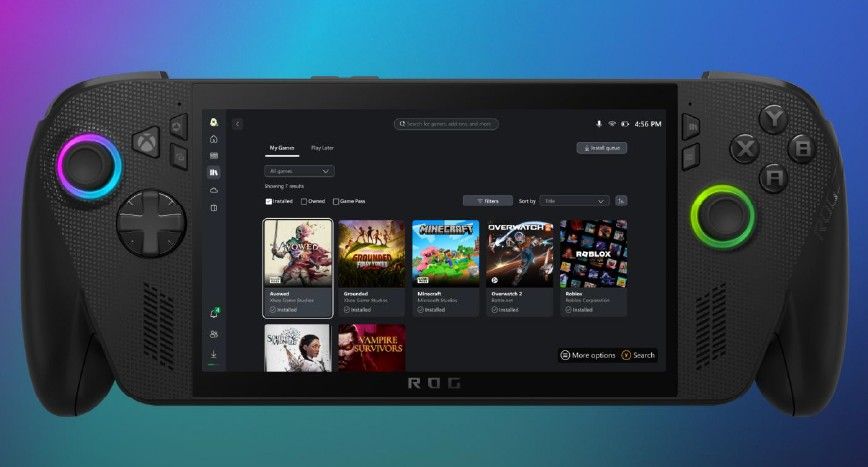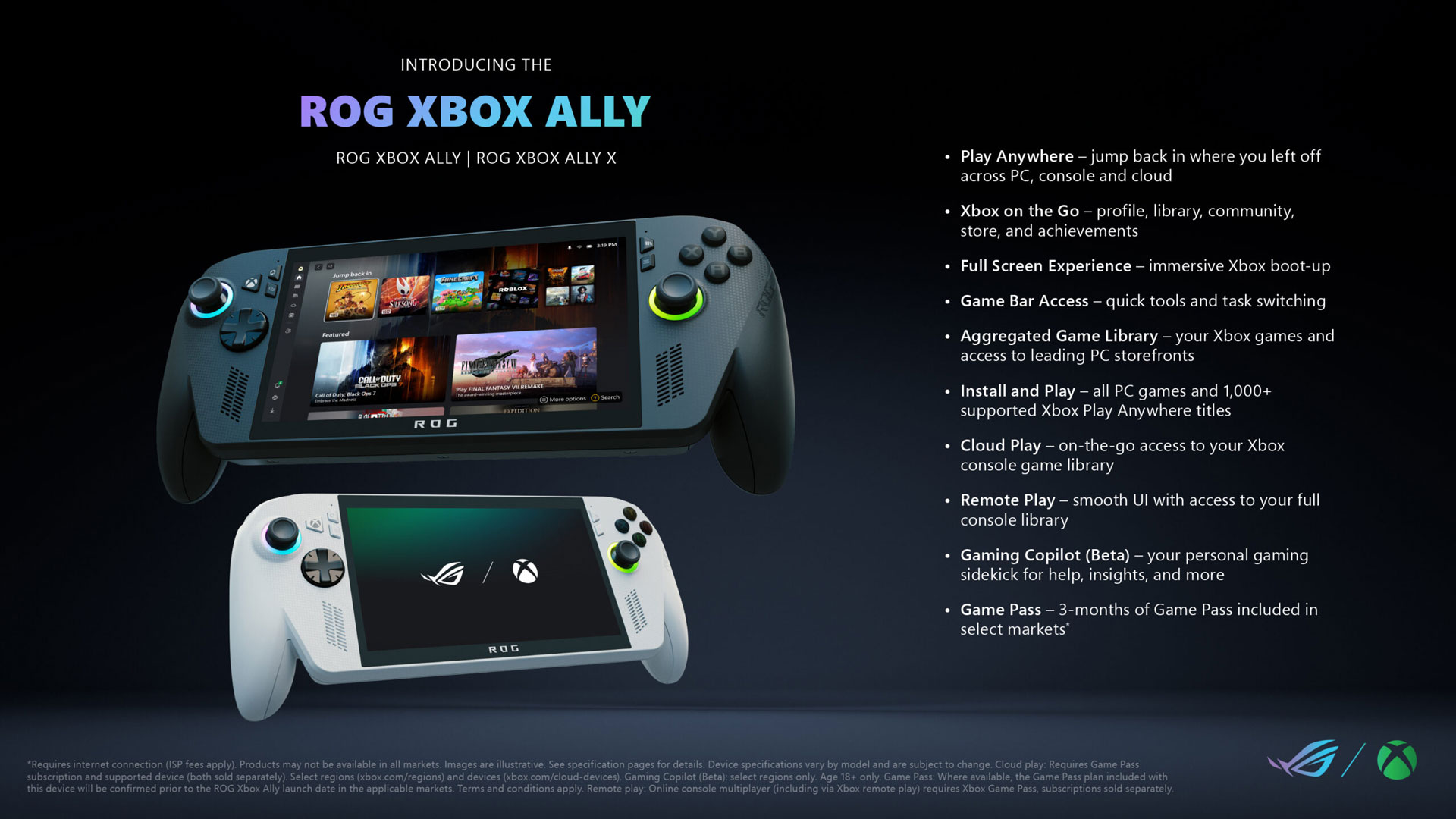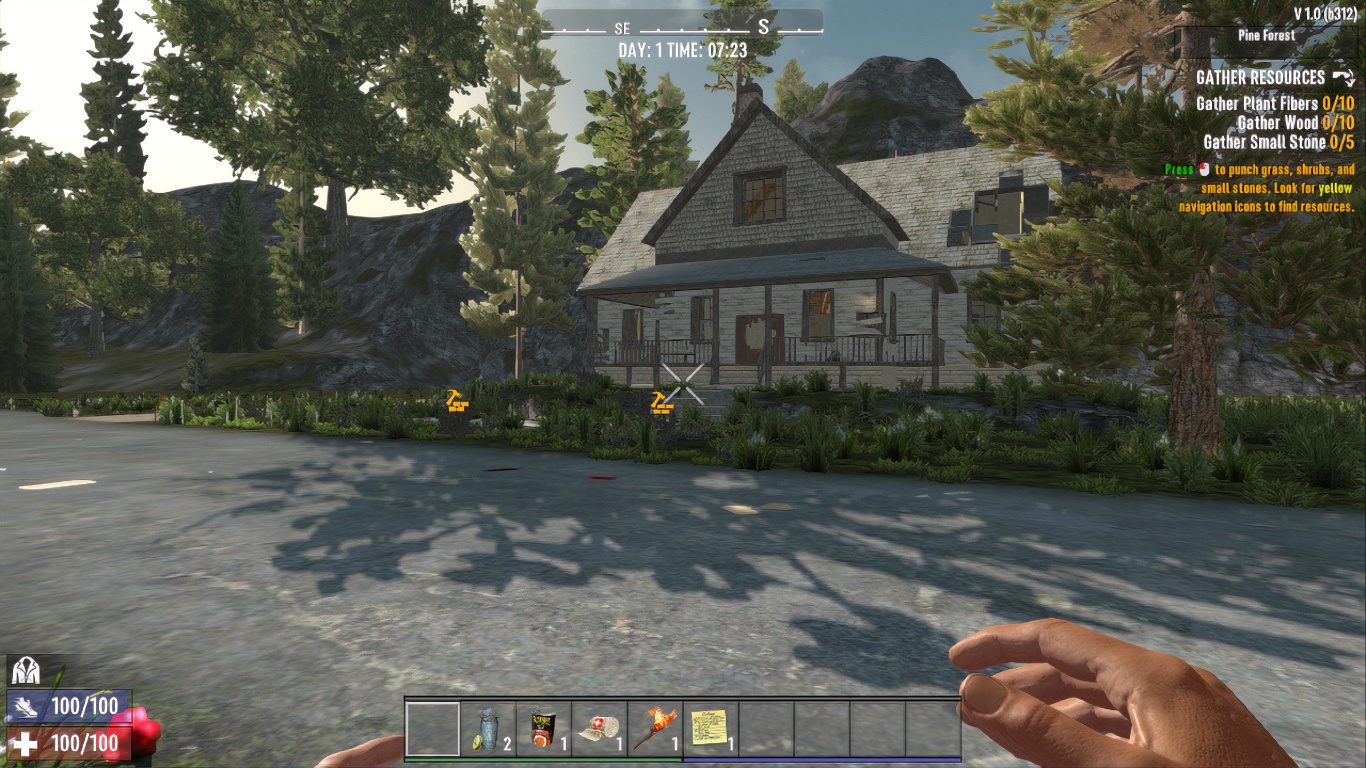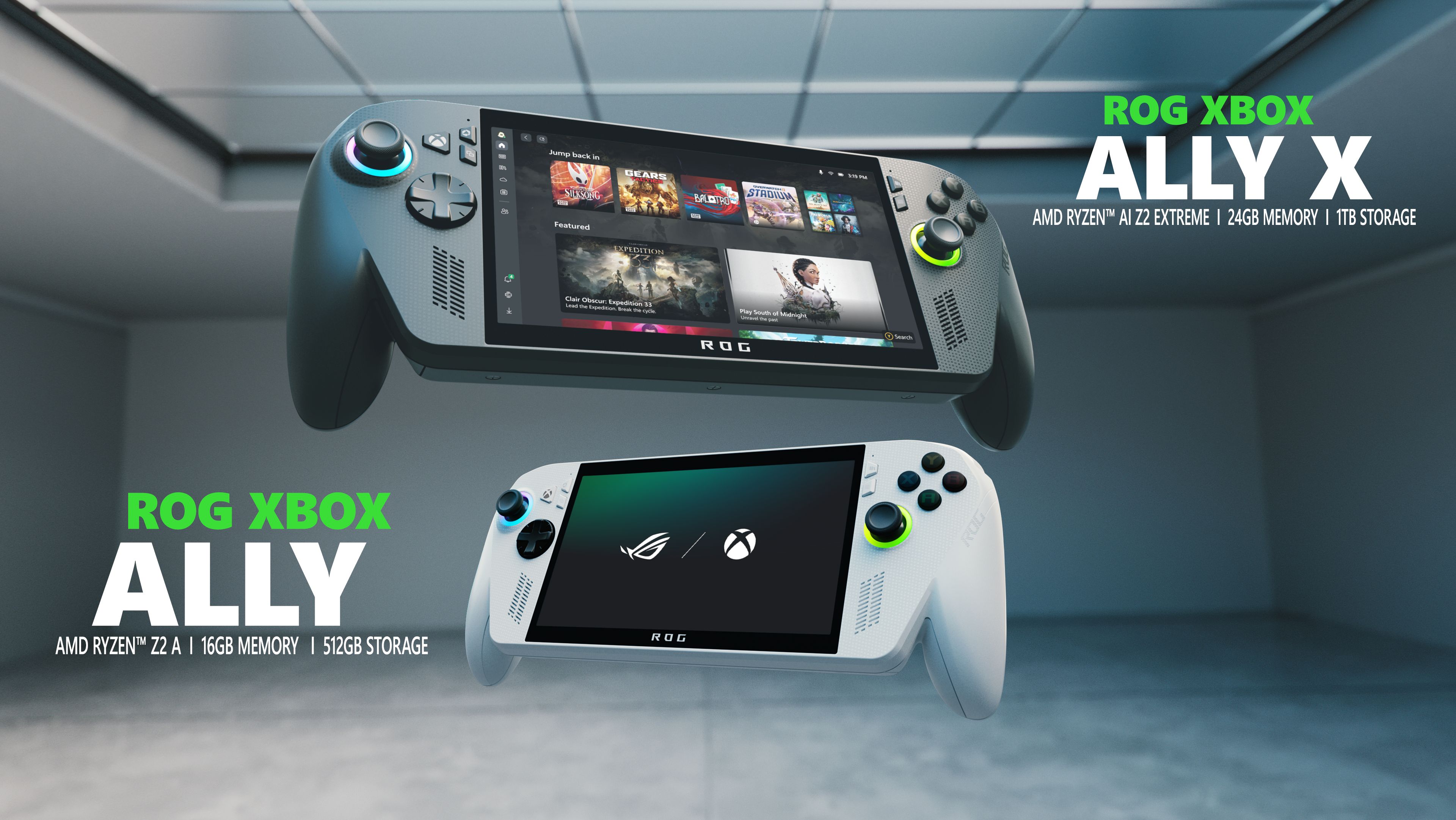
We previously mentioned updates for the Xbox Ally, but with all the recent news, it’s worth revisiting what’s coming next for the handheld device.
As a big Xbox fan, I’m really excited to see they’ve finally given us a better idea of what’s coming for the Xbox handheld! They’ve shared a plan for how they’ll improve the device with software updates and keep it supported for a long time, which is awesome news.
The Xbox handheld, available in two models – the Xbox Ally and Xbox Ally X – is now being sold in 45 countries. Created with ASUS and powered by an AMD Z2 Extreme chip, this device represents Xbox’s first major move into portable gaming. The idea behind it is promising: you can take your Xbox games, progress, friends, and Game Pass subscription with you wherever you go. However, it still has some areas for improvement.
Initial reviews highlight the Xbox’s good hardware, but many users have found the software and Windows operating system a bit clunky. Xbox recognizes these issues and has shared its plans to improve things in the coming months. Let’s take a look at what the Xbox offers right now and what’s coming down the line for the device.
What the Xbox Ally offers today

The Xbox Ally is available in two versions: the regular Xbox Ally and the Xbox Ally X. Both are designed to feel comfortable, taking cues from the classic Xbox controller. The standard model is powered by AMD’s new Z2 A chip, offering a slight performance increase compared to the Steam Deck.
The Xbox Ally X uses a powerful Z2 Extreme processor, allowing it to run even the most challenging games smoothly.
The Xbox Ally is unique because it’s built with close teamwork between the Xbox and Windows teams. It features a new Full Screen Experience that launches directly into the Xbox app, giving you a gaming experience similar to using a console.
It also stops unnecessary processes from running in the background, freeing up your computer’s resources. This is a feature many handheld Windows PC users have requested for a long time and will eventually be available on other devices as well.
Although you can’t directly install games from your Xbox console on this handheld device, it does work with PC game stores like Steam and Epic Games. Plus, if you own certain Xbox games that are part of the Play Anywhere program, you can play them on the device without buying them again.
You also get Xbox Cloud Gaming with Game Pass, allowing you to stream games on various devices, no matter your subscription level. If a game isn’t available on the cloud or PC, you can still stream it from your Xbox console at home using Xbox Remote Play.
The Xbox Ally is very new, but it’s a promising device. Being able to play Game Pass games and access your Xbox library on a portable handheld is something many gamers, including myself, have been hoping for. However, it’s not perfect yet.
Initial feedback on the device’s hardware is positive, but some users haven’t been thrilled with certain aspects of the software. Specifically, the full-screen mode feels incomplete and like it’s still in development. The team behind the device acknowledges these concerns and has shared a plan for future updates and improvements. Here’s a look at what’s coming next for users.
The Xbox Ally roadmap — what’s next for the device

Microsoft has announced that Xbox Ally users will receive several updates over the next few weeks and months.
- Default Game Profiles
- Enhanced docking experience
- AI-powered Automatic Super Resolution
- AI highlight reels
While the changes may seem small, this update also focuses on making the software more reliable, user-friendly, and faster. We expect this will fix many of the issues users have been reporting, and we’re optimistic it will improve their experience.
As a gamer, I’m really excited about the new Default Game Profiles! It seems like the system will smartly adjust settings for each game I play, which is awesome. Basically, it’s going to try and find that sweet spot between how good the game looks and how long my battery lasts, without me having to mess with a bunch of options every single time I start up a new game. That’s a huge win!
Okay, so the details are still a bit fuzzy, but it sounds like Xbox is really focusing on making the Ally work seamlessly when you hook it up to a bigger screen – like your TV or monitor. Basically, they want it to *feel* more like playing on a console. What I’m hoping for is a smoother experience overall – things like the screen scaling correctly, no annoying glitches when switching between handheld and docked modes, and just consistent, reliable performance without any weird display issues. That’s the dream, anyway!
One of the most interesting new features is Automatic Super Resolution (Auto SR). It uses artificial intelligence to make games look sharper and more visually appealing without significantly slowing down performance. This is because it utilizes the device’s dedicated AI processor (NPU) instead of the main CPU or graphics card (GPU). Auto SR essentially enhances games that run at lower resolutions, making them appear closer to 1080p or even 1440p quality. This should be especially noticeable on the Xbox Ally, as it’s the less powerful of the two devices.
This is especially important because it marks the first time Auto SR will be available on a device that isn’t powered by Qualcomm. Previously, this feature was only accessible on devices using the Snapdragon X platform.
AI-powered highlight reels are designed to make sharing gameplay easier for players and content creators. While details are still limited, the Xbox Ally would likely automatically identify exciting moments during gameplay and record them, saving you the trouble of manual recording.
A promising start, but the real test begins now

I’m really impressed with the initial launch of the Xbox Ally. It feels like a promising step, and I can definitely see a lot of potential for the future. It seems like Xbox is shifting its focus – less about the consoles themselves and more about building a strong, all-encompassing PC gaming ecosystem. It’s like they’re envisioning a future where the software and services are more important than the hardware.
The idea of a single game library combining games from Steam, Epic Games Store, and Xbox, all on an Xbox console, is really promising. It’s even more appealing if Xbox eventually includes its own console games in this unified library.
Currently, the device still needs improvement. The Ally seems unsure whether it wants to be a portable PC or a dedicated Xbox handheld, and most reviews and user comments point to the same issue: Windows is hindering the experience.
Setting up the device is currently a bit messy. It comes with pre-installed apps you might not need, like Microsoft Teams, and the process is slowed down by updates for the Xbox app and ASUS Armoury Crate. It doesn’t feel as smooth or simple as setting up a traditional gaming console.
A product that costs as much as $1,000 shouldn’t feel unfinished. Microsoft likely could have prevented a lot of the negative feedback by testing the software with its Insider Program users before releasing it.
Fortunately, Xbox recognizes that things need to get better and has already begun working on improvements. This new plan is a positive start, but now they need to deliver on it.

I love staying up-to-date on everything Windows, so I follow Windows Central on Google News. It’s the best way to make sure I don’t miss any of their latest news, cool insights, and helpful features – it keeps them right at the top of my feed!
Read More
- Ashes of Creation Rogue Guide for Beginners
- Best Controller Settings for ARC Raiders
- Meet the cast of Mighty Nein: Every Critical Role character explained
- Eldegarde, formerly Legacy: Steel & Sorcery, launches January 21, 2026
- Bitcoin’s Wild Ride: Yen’s Surprise Twist 🌪️💰
- Fishing Guide in Where Winds Meet
- Netflix’s One Piece Season 2 Will Likely Follow the First Season’s Most Controversial Plot
- Avatar 3 Popcorn Buckets Bring Banshees From Pandora to Life
- Beyond Entanglement: A New Criterion for Quantum ‘Magic’
- James Gunn Reveals Fan-Favorite Villain’s Fate in the DCU After Apparent Death
2025-10-18 20:11